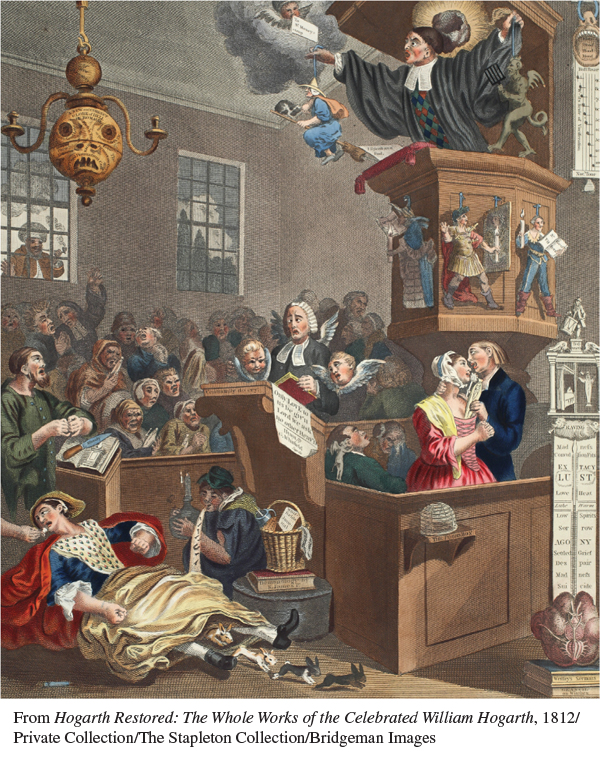A History of Western Society: Printed Page 597
A History of Western Society, Value Edition: Printed Page 574
A History of Western Society, Concise Edition: Printed Page 598
Protestant Revival
Official efforts to reform state churches in the eighteenth century were confronted by a wave of religious enthusiasm from below. By the late seventeenth century the vast transformations of the Protestant Reformation were complete and had been widely adopted in most Protestant churches. Medieval practices of idolatry, saint worship, and pageantry were abolished; stained-
In the Reformation heartland, one concerned German minister wrote that the Lutheran Church “had become paralyzed in forms of dead doctrinal conformity” and badly needed a return to its original inspiration.23 His voice was one of many that prepared and then guided a Protestant revival that succeeded because it answered the intense but increasingly unsatisfied needs of common people.
The Protestant revival began in Germany in the late seventeenth century. It was known as Pietism (PIGH-
Second, Pietism reasserted the earlier radical stress on the priesthood of all believers, thereby reducing the gulf between official clergy and Lutheran laity. Bible reading and study were enthusiastically extended to all classes, and this provided a powerful spur for popular literacy as well as individual religious development. Pietists were largely responsible for the educational reforms implemented by Prussia in the early eighteenth century (see “The Spread of Elementary Schools”). Third and finally, Pietists believed in the practical power of Christian rebirth in everyday affairs. Reborn Christians were expected to lead good, moral lives and to come from all social classes.
Pietism soon spread through the German-

Wesley’s anxieties related to grave problems of the faith in England. The government shamelessly used the Church of England to provide favorites with high-
Wesley’s inner search in the 1730s was deeply affected by his encounter with Moravian Pietists, whom he first met on a ship as he traveled across the Atlantic to take up a position in Savannah, Georgia. The small Moravian community in Georgia impressed him as a productive, peaceful, and pious world, reflecting the values of the first apostles. (For more on the Moravian Church, see “Individuals in Society: Rebecca Protten,” in Chapter 17.) After returning to London, following a disastrous failed engagement and the disappointment of his hopes to convert Native Americans, he sought spiritual counseling from a Pietist minister from Germany. Their conversations prepared Wesley for a mystical, emotional “conversion” in 1738. He described this critical turning point in his Journal:
In the evening I went to a [Christian] society in Aldersgate Street where one was reading Luther’s preface to the Epistle to the Romans. About a quarter before nine, while he was describing the change which God works in the heart through faith in Christ, I felt my heart strangely warmed. I felt I did trust in Christ, Christ alone for salvation; and an assurance was given me that he had taken away my sins, even mine, and saved me from the law of sin and death.25
Wesley’s emotional experience resolved his intellectual doubts about the possibility of his own salvation. Moreover, he was convinced that any person, no matter how poor or uneducated, might have a similarly heartfelt conversion and gain the same blessed assurance. He took the good news to the people, traveling some 225,000 miles by horseback and preaching more than forty thousand sermons between 1750 and 1790. Since existing churches were often overcrowded and the church-
Wesley’s ministry used lay preachers to reach new converts, formed Methodist cells, and eventually resulted in a new denomination. And just as Wesley had been inspired by the Pietist revival in Germany, so evangelicals in the Church of England and the old dissenting groups now followed Wesley’s example of preaching to all people, giving impetus to an even broader awakening among the lower classes. Thus in Protestant countries religion continued to be a vital force in the lives of the people.